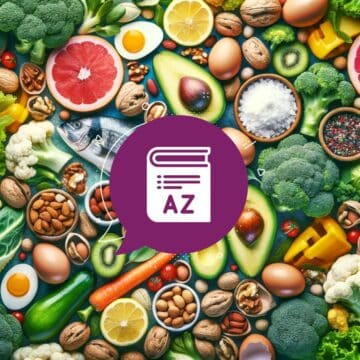The keto flu can be rough when you start keto dieting. Headaches, nausea, and constipation are all common symptoms for keto beginners. For most people, the keto flu will only last 3—5 days, but for folks with high metabolic resistance, it can last up to 2—3 weeks. Luckily, there are several things you can do to ease the pain of the keto flu. In the rest of this article, we’re going to explore how intermittent fasting, fiber, and electrolytes can make things easier for you.

Eat A Lot Of Fiber
Most people don’t get enough fiber. Fiber deficiency becomes more likely when you go keto. Fiber, protein, and fat need to be consumed in the right ratios for digestion and bowel movements to go smoothly.
Constipation that accompanies the keto flu is the result of eating tons of fat but not enough fiber. In a standard diet, most of the fiber comes from starchy foods that aren’t allowed in the ketogenic diet. Low-carb, high-fiber veggies are. You’re going to want to eat a lot of them to prevent constipation. Broccoli is best. It’s densely packed with fiber that stays intact deep into the digestive tract so that the bowel movements can keep flowing strong.
Broccoli is also great for promoting the growth of healthy gut flora by acting as a prebiotic. Prebiotics function as food for healthy bacteria so that they can thrive [1].
Try Intermittent Fasting
Intermittent fasting expedites the process of getting into ketosis. In fact, fasting is the fastest way to enter ketosis. However, 24-hour fasting isn’t necessary. Intermittent fasting, or waiting until later in the day before taking your first bite, is enough to jump-start ketosis.
To officially intermittent fast, you only need to last a total of 14 hours without food. So, if you ate your last meal at 8 pm, you only have to last until 10 am the next day. When you deprive yourself of calories through fasting, your body is forced to turn to fat stores for energy.
The overall cognitive benefits of fasting can help reduce brain fog associated with the keto flu. Intermittent fasting is proven to boost levels of BDNF (brain-derived neurotrophic factor) in the brain. BDNF is a protein in the brain that has a significant impact on neuronal health. It’s critical to neurogenesis, the creation of new neurons, and for building new connections between neurons. This makes BDNF essential for learning and memory. BDNF also has powerful neuroprotective effects that guard against aging.
Drink Plenty Of Electrolytes
Electrolyte depletion causes headaches and many of the other symptoms of the keto flu. Going keto drops electrolyte levels in the body for two reasons.
Reason number one is that much of the whole foods that are highest in electrolytes aren't allowed on the ketogenic diet. Starchy fruits and veggies are the best whole-food sources of electrolytes like calcium, sodium, magnesium, and potassium. Since you’ll be cutting them out of your diet, supplementing with a well-balanced electrolyte mix is essential if you want to prevent headaches.
The main reason you become low on electrolytes, however; is that when you go keto, you excrete way more electrolytes through the urine. In ketosis, insulin levels drop significantly due to the lack of sugar and carbs. Elevated insulin levels cause electrolyte retention, but low insulin levels trigger electrolyte secretion. Once your body adjusts to its new baseline insulin level, you won’t have to worry about this as much [2].
Low electrolytes can lead to intense brain fog and lethargy. Supplementing with electrolytes is the best way to return them to a healthy level. Better yet, stay ahead of the game and drink plenty of electrolytes before symptoms start.
In addition to electrolyte mix, try dissolving a little Himalayan pink salt in water. Himalayan pink salt has a distinct mineral profile, so it’s an excellent way to cover all your bases.
To reduce stress and ease anxiety, you might want to consider taking a magnesium supplement as well. Magnesium is an essential cofactor for much of the brain’s processes. Low magnesium levels are associated with higher levels of anxiety. It’s important for calcium and magnesium to stay in the right ratio, as they work together synergistically to optimize functions of the nervous system. Look for magnesium supplements that have calcium added and be sure to eat foods, like broccoli, which are high in calcium [3].
Conclusion
The keto flu doesn’t have to disrupt your life while you transition into ketosis. Once you make it through this initial rough patch, you’ll need to stay super consistent for a few weeks before you become fully fat-adapted. Once your metabolism is fat-centric, you’ll be able to get away with eating a few more carbs here and there without the risk of knocking yourself out of ketosis.
References:
- Li, F., Hullar, M., Schwarz, Y. and Lampe, J. (2009). Human Gut Bacterial Communities Are Altered by Addition of Cruciferous Vegetables to a Controlled Fruit- and Vegetable-Free Diet. The Journal of Nutrition, 139(9), pp.1685-1691.
- Liamis, G. (2014). Diabetes mellitus and electrolyte disorders. World Journal of Clinical Cases, 2(10), p.488.
- Sartori, S., Whittle, N., Hetzenauer, A. and Singewald, N. (2012). Magnesium deficiency induces anxiety and HPA axis dysregulation: Modulation by therapeutic drug treatment. Neuropharmacology, 62(1), pp.304-312.






Brad Roberts says
To help wit the 'constipation', I use Swiss Kriss Herbal Laxative tablets. All natural, no discomfort, and they're also great if you have to take opioid pain meds, after surgery.